Colatura di Alici: What It Is, Why It’s Worth It, and How to Use It
Colatura is an aged Italian fish sauce you need to try.
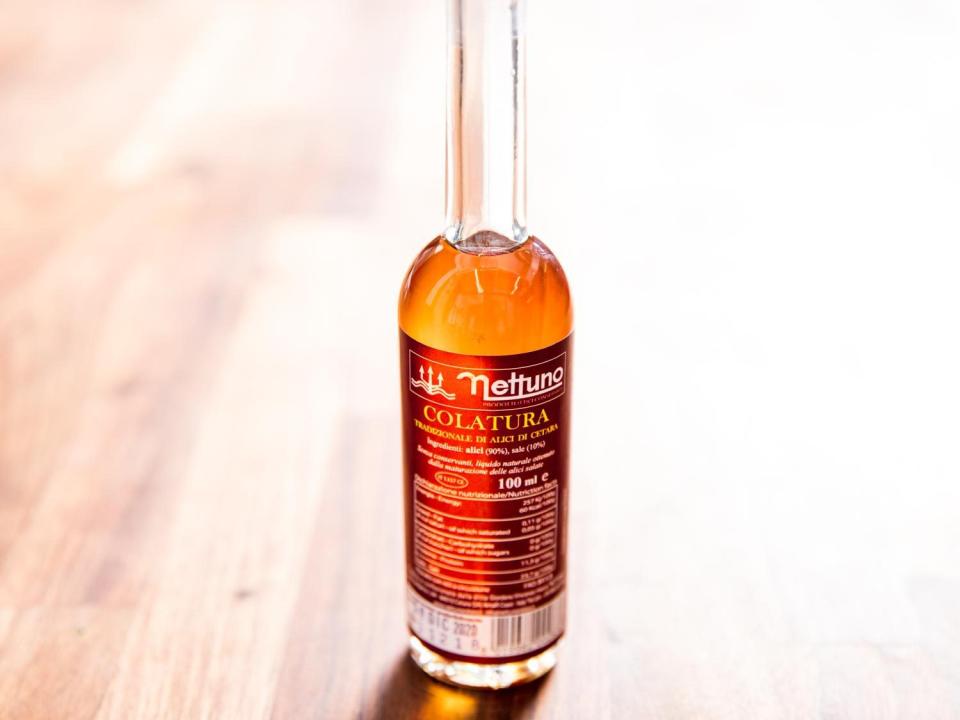
Serious Eats / Vicky Wasik
From Sho's deep dive on "the Parmesan of the sea," bottarga, to my tribute to one of the greatest condiments of all time, XO sauce, you may have noticed that we're pretty fond of seafood umami ingredients around here.
Well, it's now time to round out this savory marine trilogy (don't worry, as with Star Wars and superhero movie franchises, there will be plenty of room for more entries in our expanded salty seafood universe) with a shout-out to another fishy Italian delicacy: colatura di alici. Colatura is another umami bomb pantry item that you should definitely try at least once in your life. Fair warning: Once you do, it will be hard to live without it.
What is Colatura di Alici?
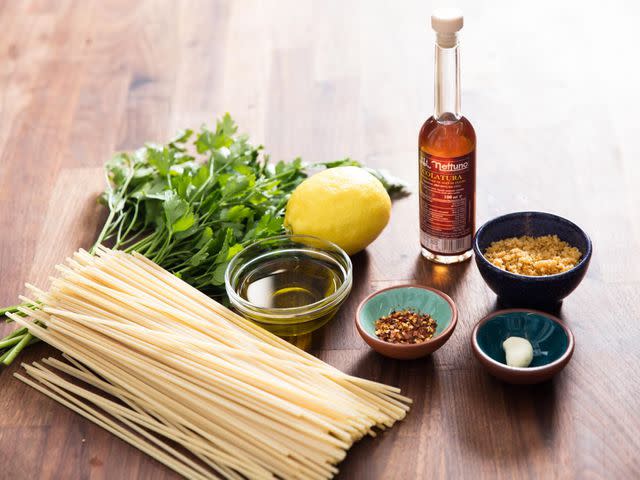
Serious Eats / Vicky Wasik
Colatura is essentially the Italian equivalent of Southeast Asian fish sauce, and a relative of the ancient Roman (and darling of the we-can-ferment-that chef world, thanks in large part to the Noma fermentation lab) sauce, garum.
Like traditionally made, high quality Southeast Asian-style fish sauce, colatura is made with just two ingredients: anchovies and salt. These products are also produced in much the same way, by layering anchovy fillets and salt in wooden barrels, then setting them aside in a temperature-controlled environment to ferment for a long, long time.
During that time, the anchovies exude liquid that will age and become colatura. The term colatura di alici translates from Italian to "anchovy drippings," which is about as straightforward of a product description as you can get.
How is Colatura Made?
I recently picked up a bottle of colatura when I paid a visit to the Bronx warehouse headquarters of Gustiamo, an online purveyor of specialty Italian products. I spent a while chatting about ingredients (as well as our favorite Roman coffee bars and New York pizza spots) with Gustiamo's founder and owner, Beatrice Ughi.
During our conversation, Beatrice walked me through the production process for the colatura that they carry, made by a small company called Nettuno ("Neptune"). For their colatura, Nettuno guts and fillets local anchovies and layers them by hand with Sicilian sea salt in small chestnut barrels called terzigni, a term that refers to their diminutive size (terzo means "third," and a terzigno is a third of the size of a standard barrel).
The terzigno lids are then weighted down and the barrels are set aside for aging. As mentioned earlier, the anchovies are left to ferment, release liquid, and age for up to three years. For comparison, high quality Southeast Asian fish sauces are generally aged for around one year (there are specialty fish sauces that are aged even longer, such as Red Boat's Chef's Cuvee fish sauce (at Amazon), which is double-aged in bourbon barrels).
Once Nettuno's tasters deem that the colatura that has risen above the weights is ready to go, they tap a hole in the bottom of the terzigno, and the colatura drains through the barrel, passing through the layers of anchovies, which provides one last boost of flavor to the fish sauce, while naturally filtering it in the process. The colatura is then bottled up for sale.
Nettuno Anchovy Colatura
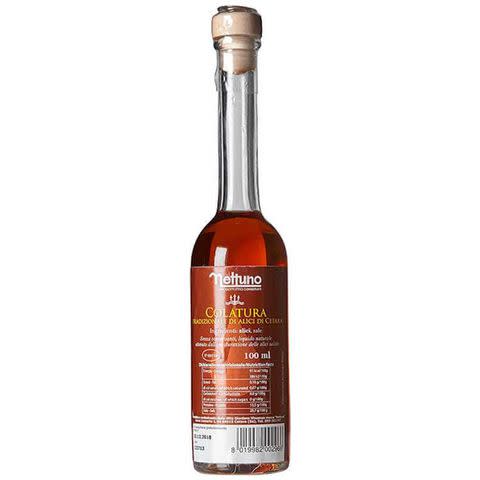
Why You Should Buy a Bottle of Colatura
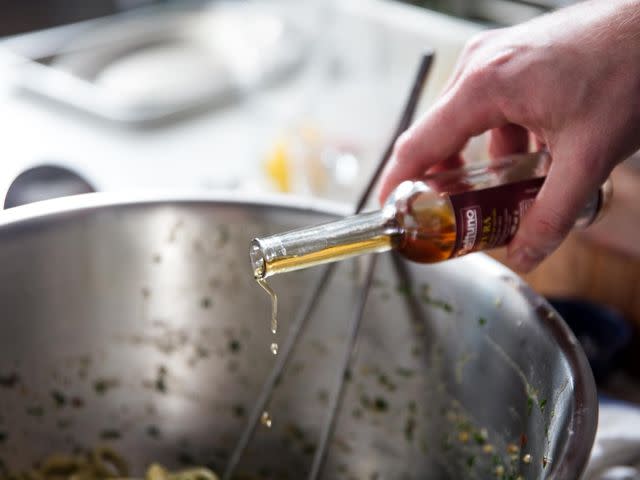
Like other aged products—Parmesan, dried scallops, jamón, Scotch whiskey, or dry-aged beef—colatura is not cheap. Aging ties up inventory, takes up space, and reduces yield. It's way cheaper to produce a large batch of Jack cheese, which only needs to age for a couple of months, than a clothbound cheddar that sits in a cheese cave for over a year. And that cost has to be passed down to the consumer. What you get in return is a massive flavor payload. It's hard to describe how deeply, intensely delicious colatura is—while it's salty and tastes of the sea, it's not fishy.
I love Southeast Asian fish sauce, and in no way do I think that colatura should be used in place of it; they taste completely different, even though they're made from the same basic ingredients. As with whiskey, the same ingredients can still produce vastly different-tasting results. While I haven't tried fresh Vietnamese anchovies, I'd bet they don't taste exactly the same as anchovies from the Amalfi Coast. The same goes for the salt. Then there are the wooden barrels, as well as the ambient air and environments that are all also different. Sho was somewhat skeptical of the reverence paid to colatura, but when we tasted it side by side with a premium Vietnamese fish sauce, he begrudgingly conceded that they are both delicious but vastly different in flavor.
That said, if you like the umami punch of supermarket Southeast Asian-style fish sauce, you will definitely be into colatura. You just need to use it a little more judiciously. I like to think of it as the fish sauce equivalent of real-deal aged balsamic vinegar; it's a specialty finishing product, not something that you toss into a steak tip marinade willy-nilly. A little colatura goes a long way.
How to Use Colatura
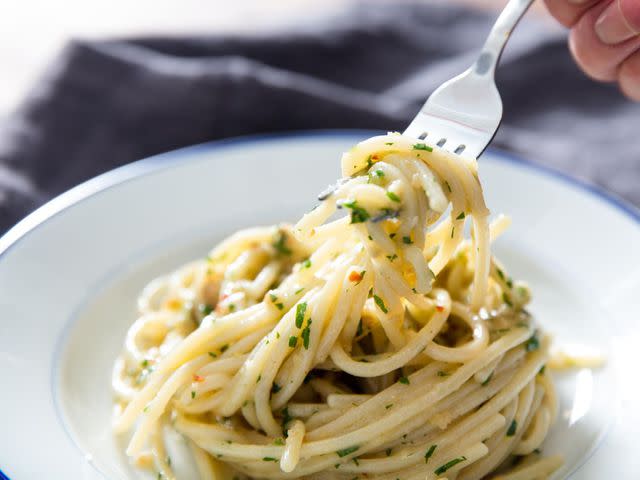
Serious Eats / Vicky Wasik
There are plenty of uses for colatura. Splash a little over grilled vegetables, a steak, pork roast, or fish. Use it to jazz up a batch of bagna càuda, or Caesar salad dressing. Or you could put colatura center-stage, and make one of the easiest weeknight pasta dishes ever, spaghetti con la colatura di alici.
April 2019

